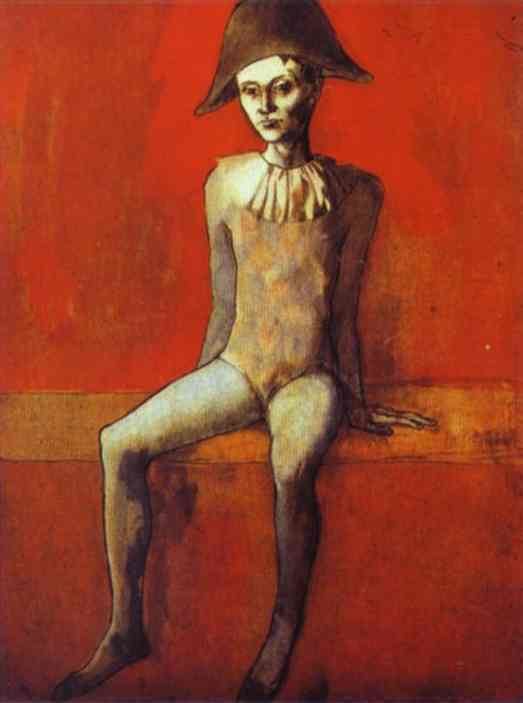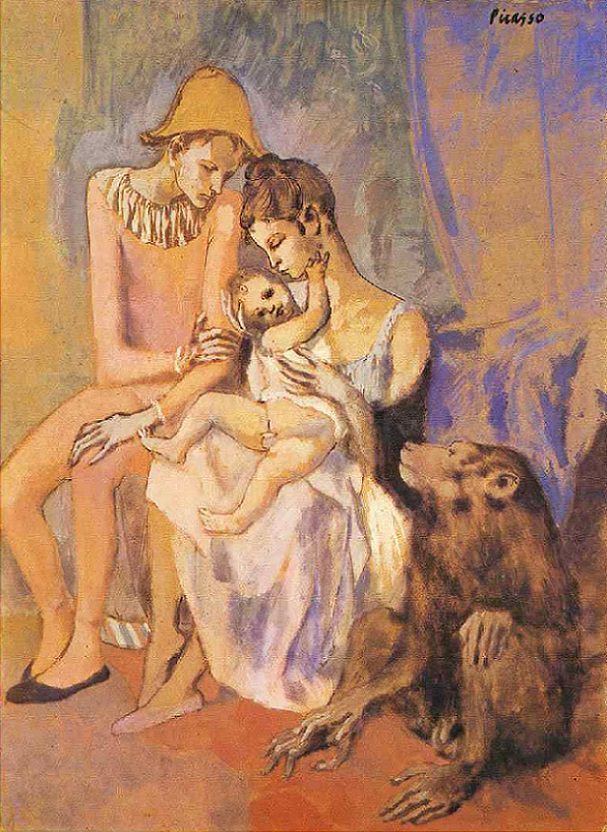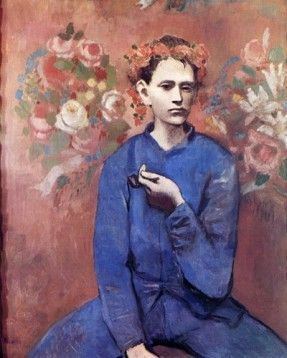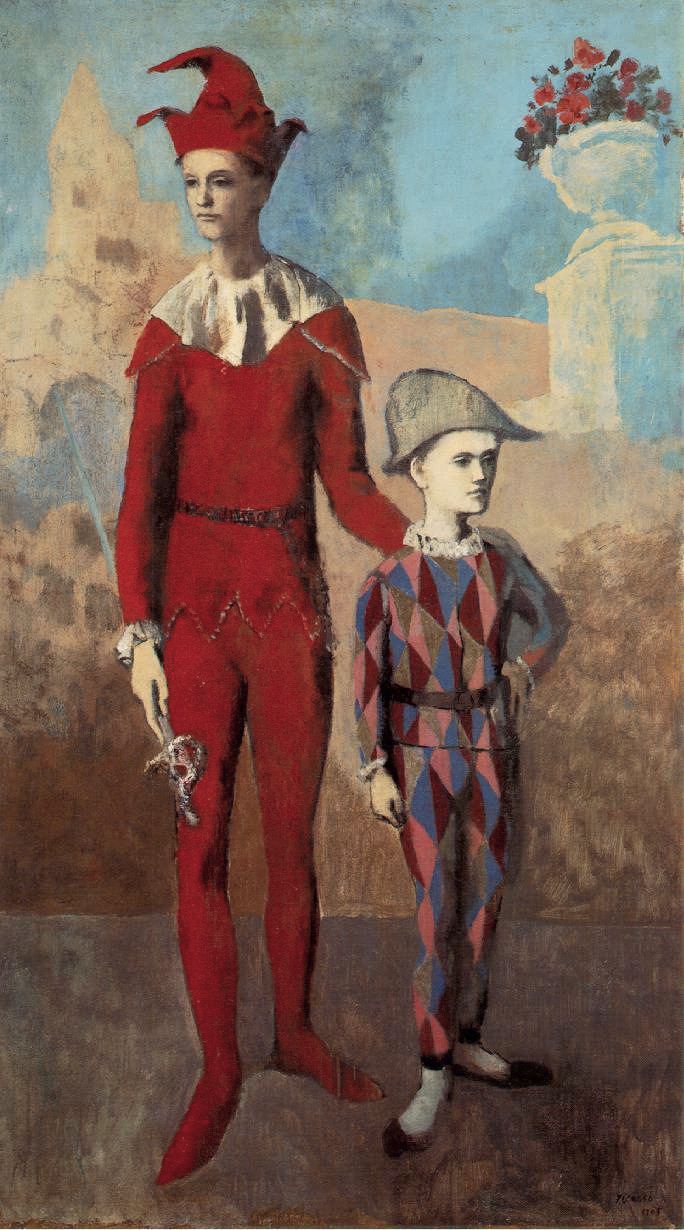 | ||
Picasso s rose period 1904 1906
Picasso's Rose Period represents an important epoch in the life and work of the Spanish artist Pablo Picasso and had a great impact on the developments of modern art. It began in 1904 at a time when Picasso settled in Montmartre at the Bateau-Lavoir among bohemian poets and writers. Following Picasso's Blue Period, depicting themes of poverty, loneliness, and despair in somber tones of daunting blues, Picasso's Rose Period represents more pleasant themes of clowns, Harlequins, carnival performers, depicted in cheerful vivid hues of red, orange, pink and earth tones. Based largely on intuition rather than direct observation, Picasso's Rose Period marks the beginning of the artists' stylistic experiments with primitivism; influenced by pre-Roman Iberian sculpture, Oceanic and African art. This led to Picasso's African Period in 1907, culminating in the Proto-Cubist Les Demoiselles d'Avignon, regarded as a masterpiece.
Contents
- Picasso s rose period 1904 1906
- Picasso his academic works blue period and rose period
- Overview
- Suggested reading
- References
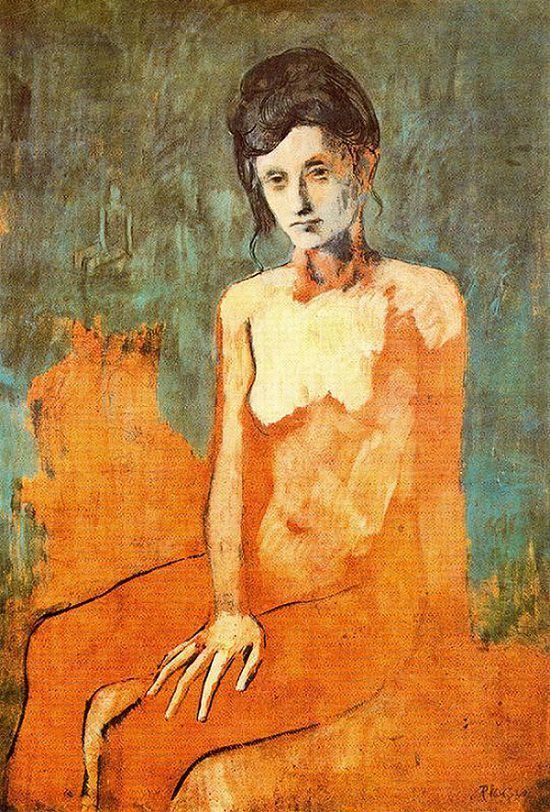
Picasso his academic works blue period and rose period
Overview
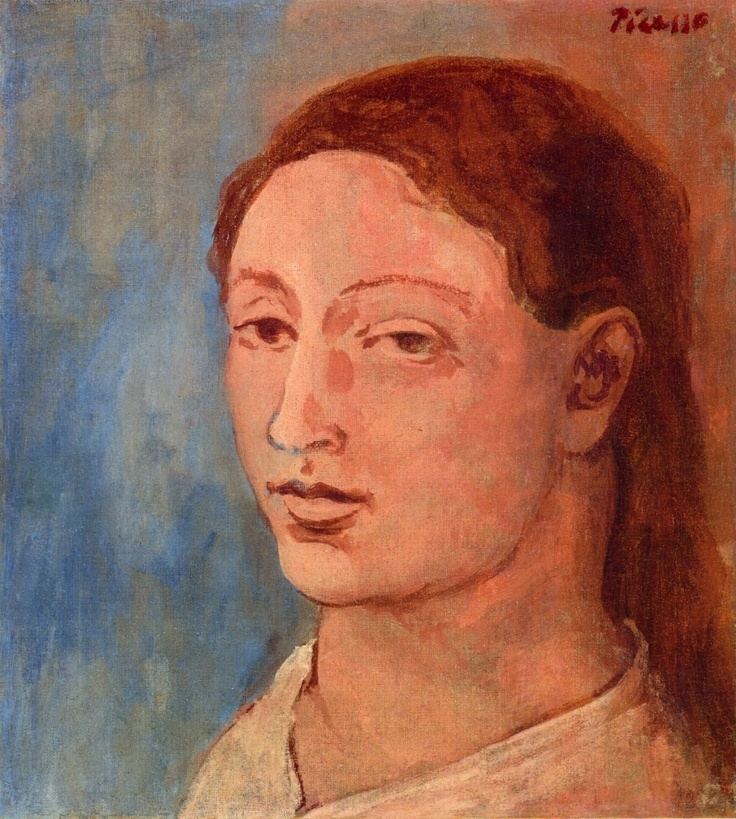
The Rose Period lasted from 1904 to 1906. Picasso was happy in his relationship with Fernande Olivier whom he had met in 1904 and this has been suggested as one of the possible reasons he changed his style of painting. Harlequins, circus performers and clowns appear frequently in the Rose Period and populated Picasso's paintings at various stages throughout the rest of his long career. The harlequin, a comedic character usually depicted in checkered patterned clothing, became a personal symbol for Picasso.
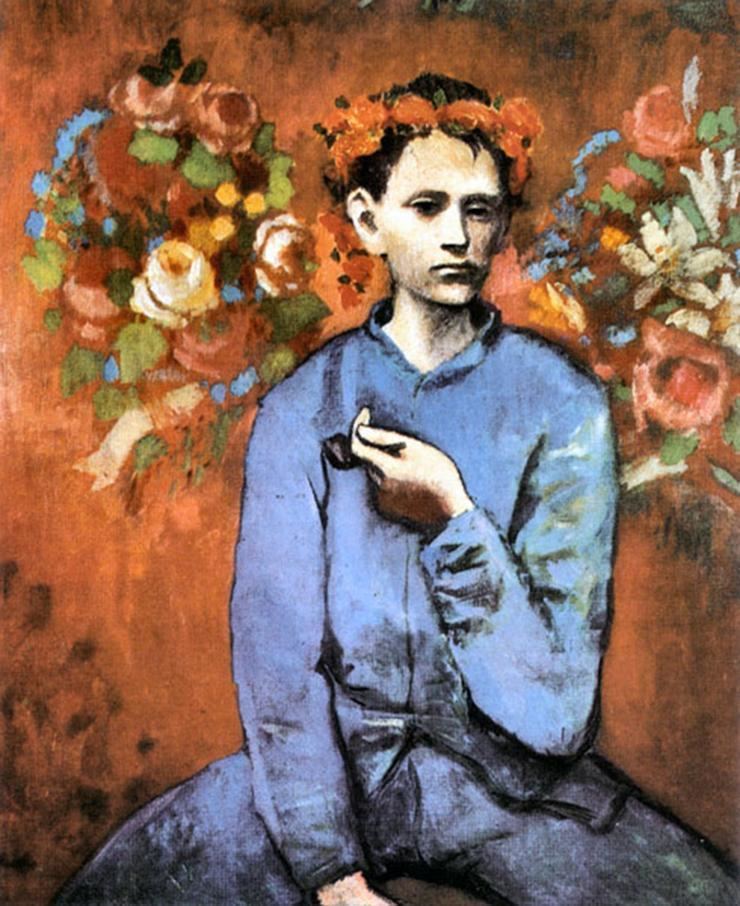
The Rose Period has been considered French influenced, while the Blue Period more Spanish influenced, although both styles emerged while Picasso was living in Paris. Picasso's Blue Period began in late 1901, following the death of his friend Carlos Casagemas and the onset of a bout of major depression. It lasted until 1904, when Picasso's psychological condition improved. The Rose Period is named after Picasso's heavy use of pink tones in his works from this period, from the French word for pink, which is rose.
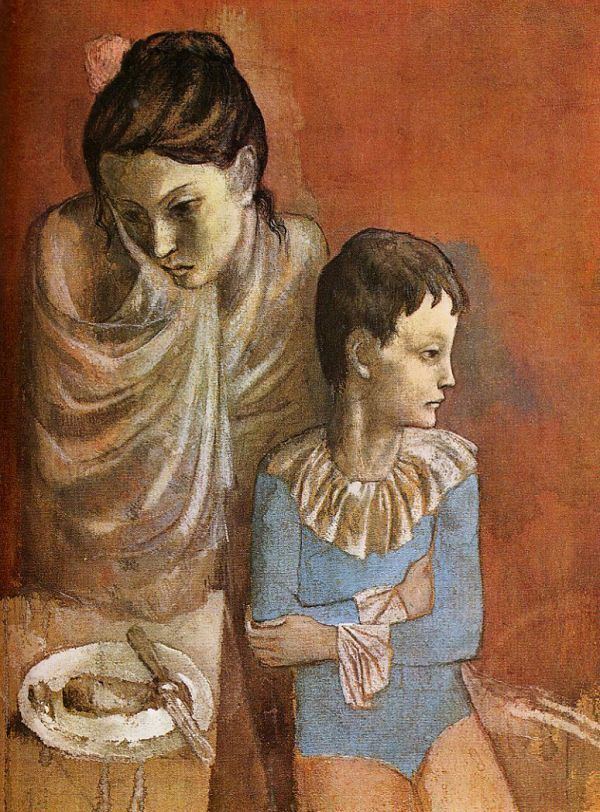
Picasso's third highest selling painting, Garçon à la pipe (Boy with a pipe) was painted during the Rose Period. Other significant Rose Period works include: Woman in a Chemise (Madeleine) (1904–05), The Actor (1904–1905), Lady with a Fan (1905), Two Youths (1905), Harlequin Family (1905), Harlequin's Family With an Ape (1905), La famille de saltimbanques (1905), Boy with a Dog (1905), Nude Boy (1906), Boy Leading a Horse (1905-06), and The Girl with a Goat (1906).
Suggested reading
